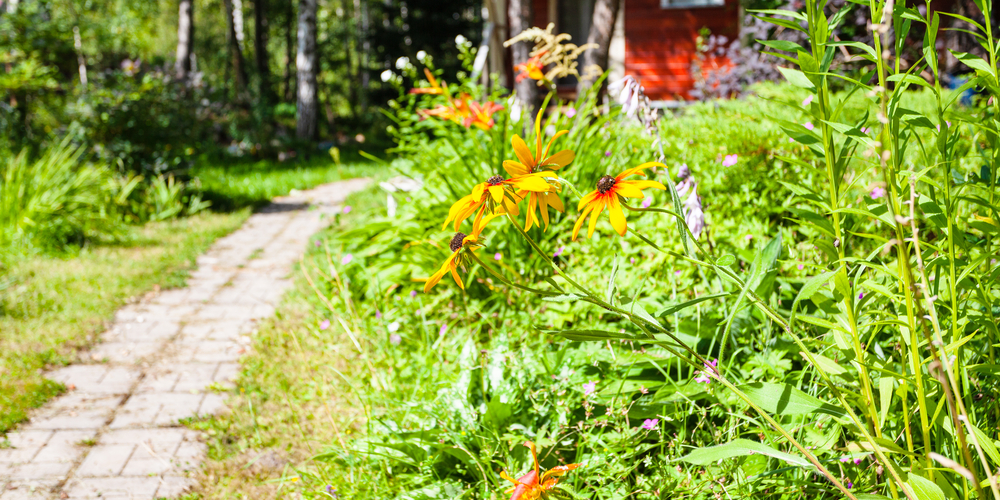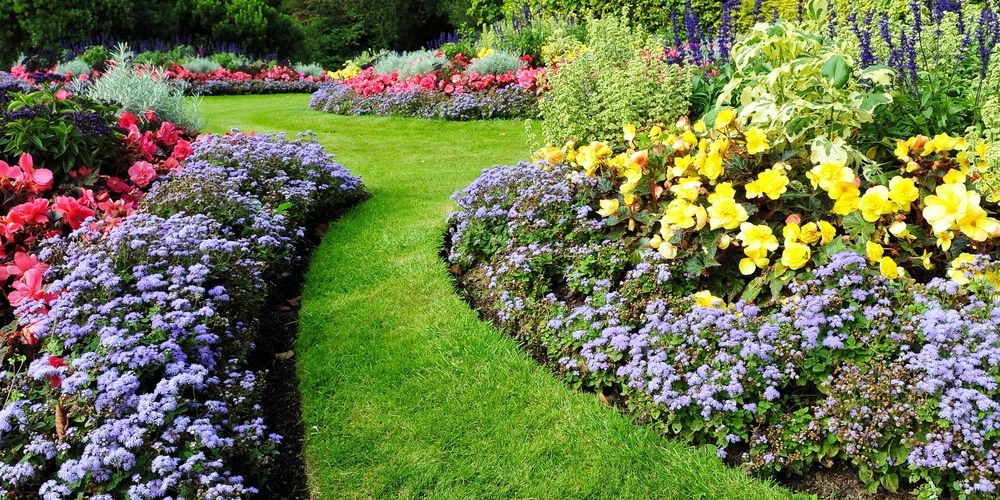Grass, particularly weeds, are unwelcome in a flower bed. They ruin the landscape’s appearance, as well as steal nutrients from your plants. Your only recourse is to get rid of pesky grass as soon as you see them. Let’s look at getting grass out of flower beds.
Getting Grass Out of Flower Bed
Here are 5 ways of getting grass out of flower bed.
Pull Grass Up By Hand
If you have the time, pulling up weeds by hand is still the best method of getting grass out of your flower bed. The practice won’t affect surrounding plants and soil, and you target only the grass you don’t want to grow in the bed.
Make sure to wear protective gloves and glasses before you start. Locate, then pull up the weed using your hand or fingers. You may want to loosen the soil first so you can also pull out the roots and disturb the seeds in the process. It’s recommended that you do this every chance you get.
Mulch Around the Plants
Mulching is very effective as far as weed prevention is concerned. Grass needs light to thrive, and if you cover them then they won’t likely survive.
Your best bet in getting grass out of flower beds is to apply a three-inch layer of mulch around your plants. Use mulch materials such as compost, shredded leaves, or wood chips so it can choke out grass growth underneath.
As an added bonus, mulch helps your plant grow better as it retains moisture and feeds it nutrients over time. It’s worth noting that you shouldn’t apply more than 2 to 3 inches of mulch or it can harm your flowers as well.
Use an Herbicide
Herbicides come in different varieties and formulations, and there are some that can treat specific kinds of grasses while others are general all-purpose solutions. You can use a pre-emergent herbicide before you plant to prepare the flower bed and kill existing weeds and their seeds.
Follow instructions as stated on the label or packaging for the best results. After spreading the matter you should water the soil and repeat every two to three months. Afterward you can apply a post-emergent herbicide that’s specifically formulated to be gentle on the plants you’re growing.
Solarize the Weeds
Solarizing is the process of cutting off a plant’s growing requirement and increasing the temperature such that it kills them. This can be done in a number of ways, but the most common and cost-effective forms are plastic sheets, newspaper, and flattened cardboard boxes.
The first step to solarizing grass is to cover it with plastic or old newspaper. This traps the air around the ground and deprives the grass of sunlight, which leads to a slow decline. Furthermore, the temperature gets to a point where the grass shrivels up and dies.
Leave the sun barrier for about a month, then check and see if the grass has been killed. If not, keep the cover on and add more layers if necessary.
Use Organic and Natural Solutions
There are several more methods to kill grass in your flower bed. One is to boil a pot of water and directly apply it to the grass or weed, which kills not just the plant but its seeds as well. Two, you can use lemon juice or vinegar to acidify the soil and make it uninhabitable, but beware of putting too much or it will affect your flowers as well.
Alternatively, you can use a high concentration of baking soda or salty water to kill the grass first, then wash it away before starting your desired plants. To prevent grass from coming back it’s recommended that you till the soil, apply mulch, and constantly look out for pesky weeds.
Related article: Do Raised Garden Beds Need Drainage?

